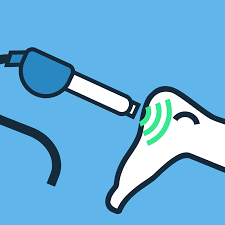What is Aquatic Therapy?
Aquatic therapy, also known as water therapy or pool therapy, is a form of physical therapy that

takes place in a water-based environment, typically a pool. This therapeutic approach uses the properties of water, such as buoyancy, resistance, and hydrostatic pressure, to facilitate rehabilitation, improve physical function, and address various health conditions.
Key components of aquatic therapy include:
1. Buoyancy: Water buoyancy reduces the effects of gravity, supporting the body and decreasing the impact on joints. This is particularly beneficial for individuals with mobility limitations, arthritis, or orthopedic conditions.
2. Resistance: Water provides resistance in multiple directions, engaging muscles throughout the body. Resistance can be adjusted by altering the speed and intensity of movements, allowing for targeted strengthening exercises.
3. Temperature: Aquatic therapy is often conducted in a warm-water pool. The warm temperature helps relax muscles, increase blood circulation, and alleviate pain. This can be especially useful for individuals with conditions involving muscle tightness or spasms.
4. Hydrostatic Pressure: The pressure exerted by water helps reduce swelling and improves
circulation. Hydrostatic pressure also provides joint support, making it beneficial for individuals
with arthritis or joint-related issues.
5. Safe Environment: The supportive nature of water makes aquatic therapy a safe environment for individuals with balance issues or those at risk of falling. It allows for the performance of exercises that might be challenging or unsafe on land.
Common conditions treated with aquatic therapy include:
- Orthopedic Injuries: Rehabilitation after surgeries, fractures, or joint replacements.
- Neurological Conditions: Stroke, spinal cord injuries, multiple sclerosis, and other neurological disorders.
- Arthritis and Joint Pain: Management of pain and improvement of joint mobility.
- Musculoskeletal Disorders: Addressing muscle imbalances, weakness, and musculoskeletal conditions.
- Chronic Pain: Providing pain relief and improving function in individuals with chronic pain conditions.
- Rehabilitation: Supporting recovery after accidents or injuries.
Aquatic therapy sessions are typically guided by a trained healthcare professional, such as a physical therapist or aquatic therapist, who tailors exercises to the individual's specific needs and abilities. The therapy may involve a combination of stretching, strengthening, balance, and cardiovascular exercises.
It’s important to note that aquatic therapy is not suitable for everyone, and its appropriateness depends on individual health conditions. Before starting aquatic therapy, individuals should consult with their healthcare provider to ensure that it is a safe and beneficial option for their specific circumstances.














































